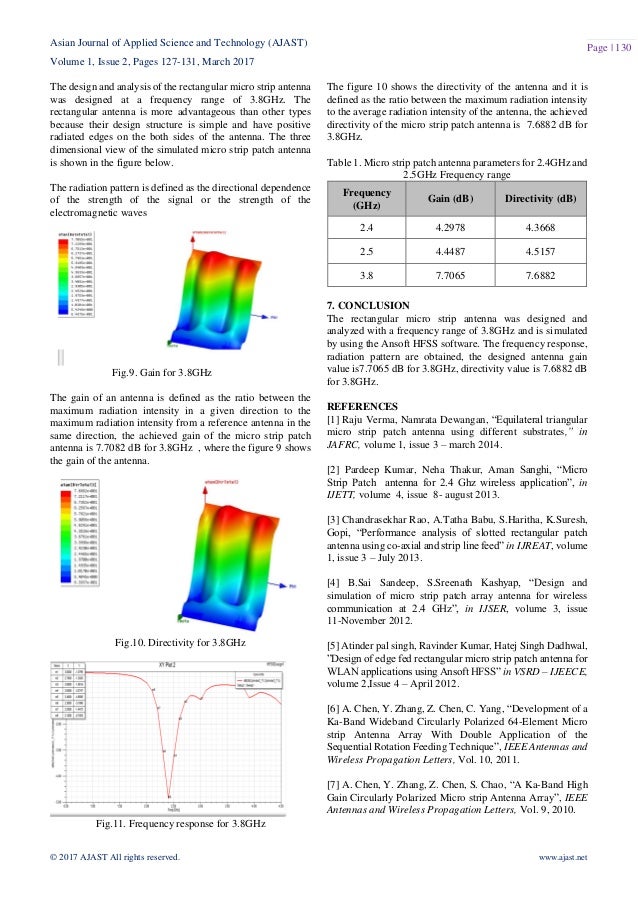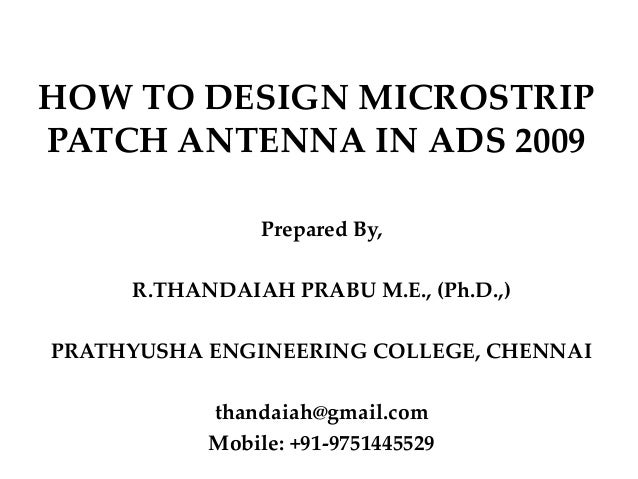How To Design A Microstrip Patch Antenna In Hfss
- Microstrip Patch Antenna Design Paper 2016
- Rectangular Microstrip Patch Antenna
- Microstrip Patch Antenna Design
AIM & OBJECTIVESO To study Micro-strip Patch Antenna.O To design and implement this antenna using the software HFSS, v 11.0.
Welcome to Rozendal Associates! Rozendal Associates, Inc. Develops and manufactures quality innovative microwave products to meet the unique requirements of our customers. These products include radar reflectors, radomes, and microwave antennas. Rozendal also performs microwave testing and provides quantitative results. Rozendal Associates is a custom manufacturing company that provides microwave products and services to our customers.

If you have a specific manufacturing or testing need, please contact us with your requirements and we will respond shortly to your inquiry.
Microstrip Patch Antenna Design. 1. Study & Design of Micro- strip Patch AntennaPRESENTED BY:-Diptajit Biswas(EC/08/50)Amit Samanta (EC/08/49)Saikat Mandal(EC/08/66)Under the kind guidance of,Mr. Asim Biswas.
IntroductionO Need of AntennaO Progress of Communication system. AIM & OBJECTIVESO To study Micro-strip Patch Antenna.O To design and implement this antenna using the software HFSS, v 11.0. How does an antenna work?.Antenna is one type oftransducer that converts theelectrical energy into theelectro-magnetic energy inform of electromagneticwaves.Antennas are required byany radio receiver ortransmitter to couple itselectrical connection to theelectromagnetic field. Antenna characteristics:-.Power gain.Directivity.Antenna radiation patterns.Polarization.
Microstrip Patch Antenna Design Paper 2016
Overview of micro-strip AntennaO Developed after revolution in Electronic Circuit Miniaturization & LSI in 1970.O Used on rockets & missiles previously.O Designer’s choice. Micro-strip Patch AntennaWhat is Micro-strip Antenna? A Micro-strip patch antenna consists of a radiating patch on one side of a dielectric substrate which has a ground plane on the other side. Invented by Bob Munson in 1972 (but earlier work by Dechamps goes back to1953).
Rectangular Microstrip Patch Antenna
Different Parameters of Micro-strip AntennaOL = Length of the Micro-strip Patch ElementOW = Width of the Micro-strip Patch ElementOt= Thickness of PatchOh = Height of the DielectricSubstrate. Basic Principles of Operation.The patch acts approximatelyas a resonant cavity (shortcircuit walls on top andbottom, open-circuit walls onthe sides).In a cavity, only certainmodes are allowed to exist, atdifferent resonant frequencies. If the antenna is excited at aresonant frequency, a strongfield is set up inside thecavity, and a strong current onthe (bottom) surface of thepatch. This producessignificant radiation (a goodantenna). Different Shapes of Micro-strip Patch Elements. Advantages of Micro-strip Patch Antenna.Light weight and low volume.
Low profile planar configuration which can be easily madeconformal to host surface. Low fabrication cost, hence can be manufactured in largequantities. Supports both, linear as well as circular polarization. Can be easily integrated with microwave integrated circuits(MICs).Capable of dual and triple frequency operations. Mechanically robust when mounted on rigid surfaces. Disadvantages:-.Narrow bandwidth.Low efficiency.Low Gain.Extraneous radiation from feeds and junctions.Poor end fire radiator except tapered slot antennas. Low power handling capacity.
Surface wave excitation. Feed Techniques:-Micro-strip antenna can be feed by variety ofmethods. This methods can be classified into twocategories-contacting and non-contacting. Theforemost popular feed techniques used are:- O Micro-strip line. O Co-axial probe O Aperture coupling O Proximity coupling. Software used to design Micro-strip Patch AntennaOHFSS is commercial finite elementOmethod solver for electromagneticOStructures.from Anasys Corp.OHFSS stands for High FrequencyOStructural Simulator.
Microstrip Patch Antenna Design

It is one oftheOSeveral commercial tools used forOantenna design. It was developedOby Prof.

Zontal Cendes and hisOstudents at Carnegie Mellon Univ.Oin the year 1989. The Design Specifications:-. Dielectric constant(εr)= 2.2 ≤ εr≤ 12.Frequency (fr) = 1.85 to1.90 GHz.Height (h) = 0.003λo≤h≤0.05 λo.
Velocity of light (c) = 3×10^8 ms-1.Practical width (W) = W.